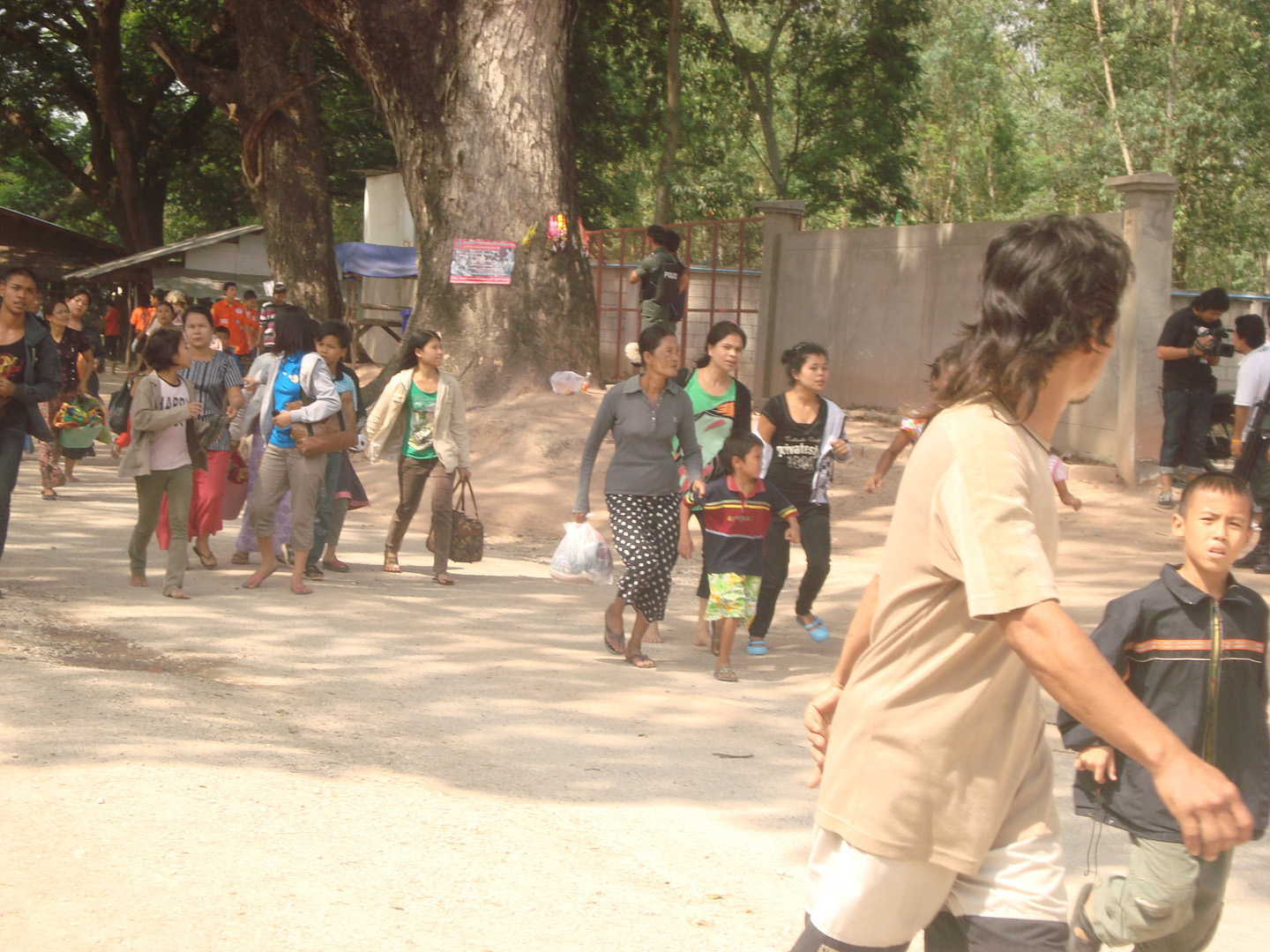Enemies of the State

As the rainy season gains momentum, upwards of 14,000 ethnic Karen refugees remain in makeshift shelters just inside the Thai border, displaced by fighting between the Burmese army and a breakaway faction of the Democratic Karen Buddhist Army (DKBA) that erupted following national elections last year and continues to displace thousands in eastern Burma.
Displaced villagers have encamped in scattered and basic shelters in areas out of sight of the authorities on both sides of the border along an 800-kilometer stretch of land in Kanchanburi, Tak and Mae Hong Son provinces, where they face serious health risks such as malaria, dysentery, respiratory infections and mental stress, as well as a growing shortage of food and clean water.
A situation update from May 16 by the Back Pack Health Worker Team, a group of mobile medics who have been providing emergency healthcare services to villagers in conflict areas inside Burma, said that clashes have occurred on a daily basis in recent weeks, and that violence has continued largely unabated since November last year.
Fighting erupted in Myawaddy Township in November last year, as the Burmese army put pressure on armed ethnic opposition groups to form Border Guard Forces.
More than 1,000 soldiers from DKBA Brigade 5, led by Major General Saw Lah Pwe (also known as Na Khan Mway), rejected the border force plan and attacked Burmese army positions in Myawaddy town.
Since that time, forces from the DKBA and the Karen National Liberation Army have engaged the Burmese army across Karen State, leading to fresh waves of refugees across the border.
“The displaced community members from Karen state are in hiding along the border areas and have little to no access to international protection mechanisms generally available to civilians fleeing conflict,” the BPHWT situation report states.
“Community groups continue to provide basic assistance to the displaced people, but are facing increasing difficulties as, six months after the initial increases in fighting and displacement, funding becomes increasingly difficult to secure and community workers themselves face increasing risks and protection concerns.”
Chronic food shortages and uncertainty about their immediate future have left some displaced villagers angry at the hostilities at home and the lack of resources to support their families on the Thai side of the border, where they lack official refugee status and employment opportunities, and they fear repatriation by Thai authorities.
“I get very angry. It is indescribable. Sometimes, I even think of going back and fighting the Burmese army, but I am too old now,” said U Mya Ye, 55.
Those who flee risk the loss of their homes, businesses and crops to marauding Burmese troops.
“I had a small shop back home, and I left everything behind when I fled to Thailand. Although I locked the shop, everything in the shop was taken or destroyed,” said Ma Than Myint, 40, from Shwe Inn Myaing village.
Ma Than Myint and others say they are caught between local authorities who want them to the leave safety of their temporary refugee sites and the dangers of going home, in particular, hidden landmines, one of which injured her father-in-law when the two of them returned to check on their property.
The Thai Burma Border Consortium, an umbrella group of community and international non-governmental organizations, estimates that at least 73,000 people have been forced to leave their homes in eastern Burma in the last year, and more than 446,000 people remain internally displaced in Karen state.




